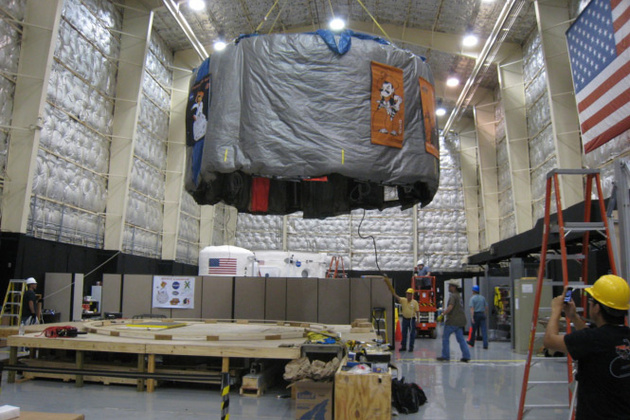via NASA
A couple of interesting, NASA-related things have happened in the last few days, for better and for worse. The good news is that the agency has, in cooperation with he National Space Grant Foundation, selected seven projects from six universities to participate in the 2014 Exploration Habitat (X-Hab) Academic Innovation Challenge. The bad news is that the House Appropriations Committee approved the smallest NASA budget since 1986. So the agency is tapping into the next generation of innovators to breathe new life into it’s deep space future, if that future survives the deep budget cuts the House committee is proposing (which would also have to be approved by the Senate, a very slim possibility).
The X-Hab challenge will give undergraduate students a pretty interesting opportunity. Throughout the 2013-2014 academic year, seven teams from six universities will work to design, manufacture, assemble, and test systems and concepts that will help future astronauts living in deep space.
We can look at the teams and what they’re working on for a sense of what the future in deep space exploration might look like.
In terms of living spaces, a team from Oklahoma State University is going to be researching a horizontal habitability layout. As an alternate style, the group from the University of Maryland, College Park, is looking into vertical habitability layouts.
Some teams are focusing on creating livable environments. The group from the University of Colorado at Boulder will research ways to grow plants “anywhere,” specifically in free habitat spaces. Rice University students in Houston will work on a system called “SpaceRing,” which is a versatile, scalable power-generation and cooling system. The University of South Alabama at Mobile will work on developing closed environment air revitalization systems that use metal organic framework adsorbents–that is, metals that can hold molecules of a gas, liquid, or solid as a thin film on its external surface.

Crew Quarters in the University of Maryland 2011 team's X-Hab loft. via
Rounding out the teams, Students from the University of Wisconsin at Madison will research the Badger Compartmentalized Onboard Material Extrusion Technology, and a second group from Maryland will be researching neutral buoyancy and parabolic flight habitats.
So NASA’s looking ahead to having either a vertical or horizontal self-regulating deep space habitat where organics can thrive and metals hold materials on their walls. Awesome.
Throughout the process, team will work closely with members of NASA’s Advanced Exploration Systems (AES) Program's Deep Space Habitat Project team. The goal of this cooperative program is to encourage university students and their faculty advisers to seek creative and innovative solutions to problems. In the longer term, NASA is hoping that these kinds of activities will inspire aspiring engineers to pursue careers in space.
The overarching goal, pending the budget enables it, is for NASA develop the technology that will eventually solidify our place in space.
